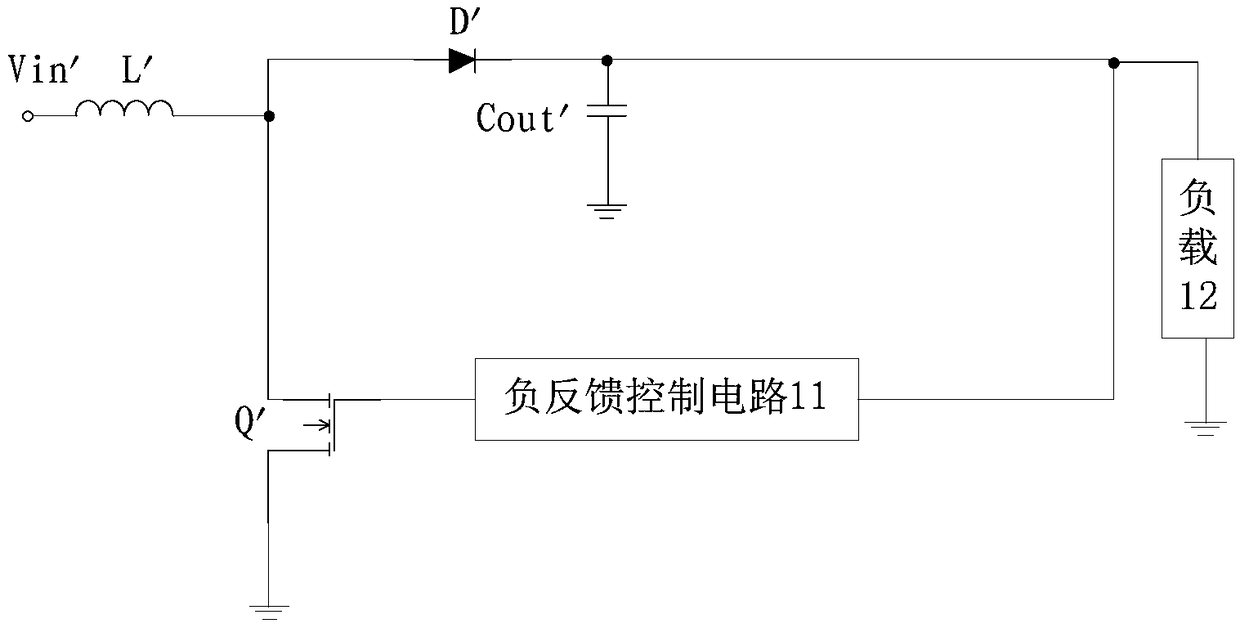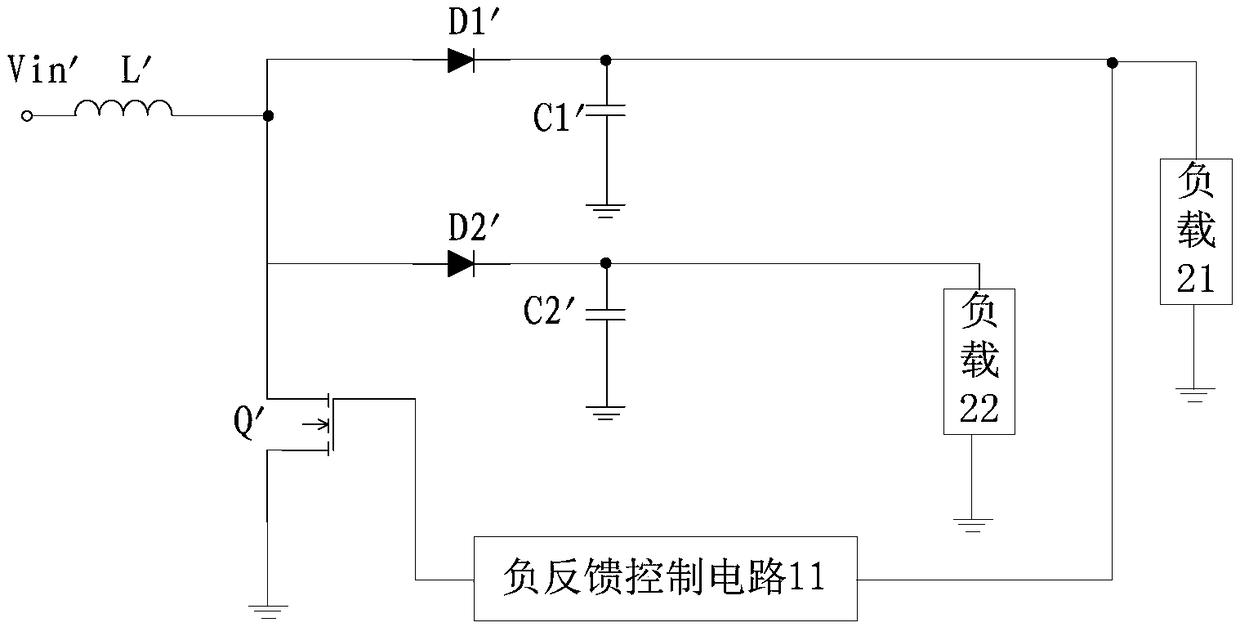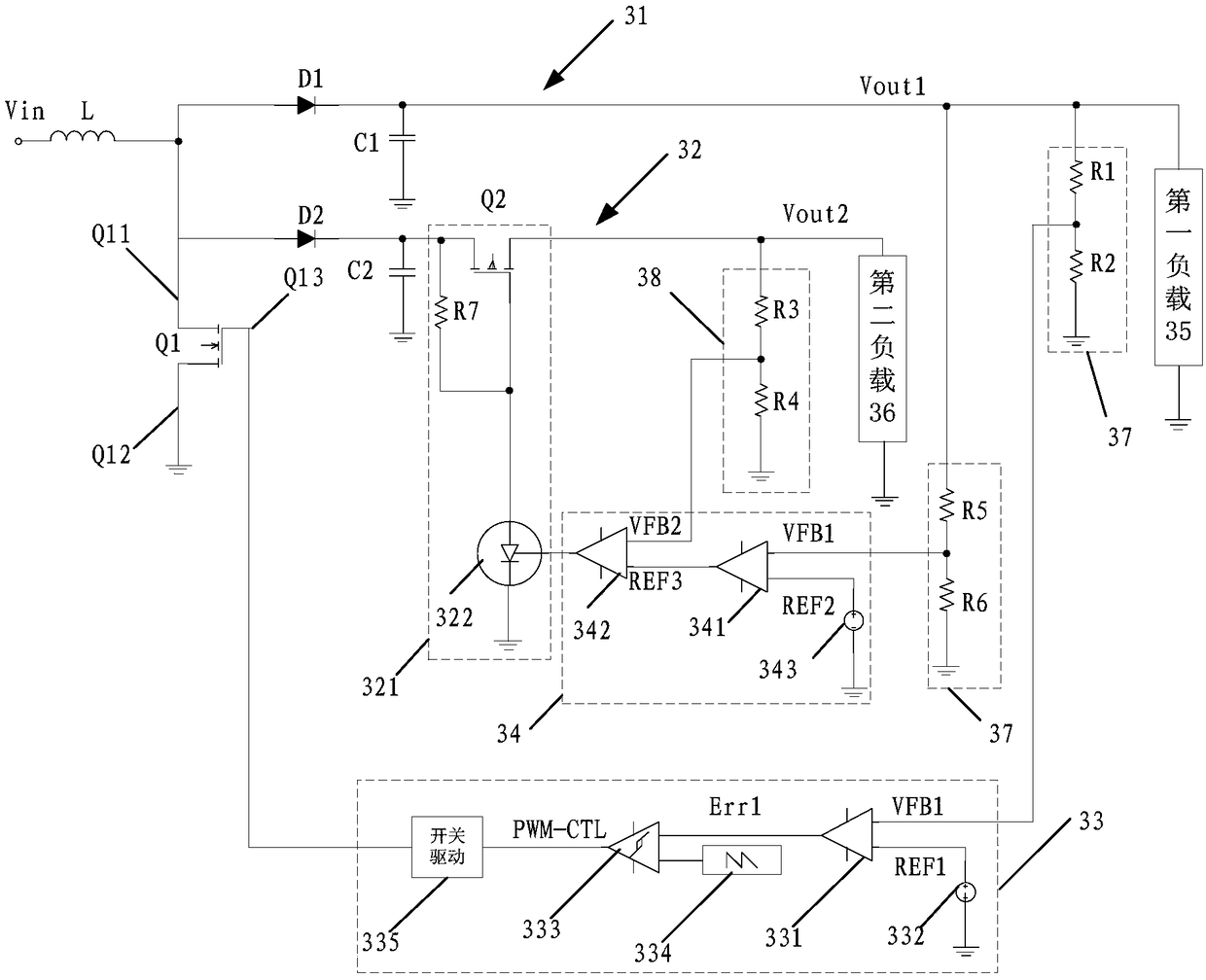A DC-DC Voltage Converter
A DC voltage and converter technology, applied in the direction of converting DC power input to DC power output, adjusting electrical variables, instruments, etc., can solve problems such as the inability to achieve constant voltage performance, achieve reduced circuit space, excellent results, and cost reduction Effect
- Summary
- Abstract
- Description
- Claims
- Application Information
AI Technical Summary
Problems solved by technology
Method used
Image
Examples
Embodiment 1
[0037] Such as image 3 Shown is a circuit schematic diagram of a DC-DC voltage converter provided by an embodiment of the present invention, including: an inductor L, a switching device Q1, a first voltage feedback control circuit 33, a first rectification branch 31, at least one A second rectification branch 32 and at least one second voltage feedback control circuit 34;
[0038] One end of the inductor L is used to connect to the DC voltage source Vin, and the other end is respectively connected to the input end of the first rectification branch 31, the input end of the second rectification branch 32, and the switching device Q1. The first switch end Q11 is connected, the second switch end Q12 of the switching device Q1 is grounded, the output end of the first rectification branch 31 is used to supply power to the first load 35, and the output end of the second rectification branch 32 is used for for supplying power to the second load 36;
[0039] The first voltage feedba...
Embodiment 2
[0048] A DC-DC voltage converter provided by an optional embodiment of the present invention includes: an inductor L, a switching device Q1, a first voltage feedback control circuit 33, a first rectification branch 31, and at least one second rectification branch 32 And at least one second voltage feedback control circuit 34 .
[0049] One end of the inductor L is used to connect to the DC voltage source Vin, and the other end is respectively connected to the input end of the first rectification branch 31, the input end of the second rectification branch 32, and the switching device Q1. The first switch end Q11 is connected, the second switch end Q12 of the switching device Q1 is grounded, the output end of the first rectification branch 31 is used to supply power to the first load 35, and the output end of the second rectification branch 32 is used for for supplying power to the second load 36 .
[0050] The first rectification branch 31 also includes a first voltage dividin...
Embodiment 3
[0066] Such as Figure 4 Shown is a schematic circuit diagram of a DC-DC voltage converter provided by another alternative embodiment of the present invention, including: an inductor L, a switching device Q1, a first voltage feedback control circuit 33, and a first rectification branch 31 , at least one second rectification branch circuit 32 and at least one second voltage feedback control circuit 34;
[0067] One end of the inductor L is used to connect to the DC voltage source Vin, and the other end is respectively connected to the input end of the first rectification branch 31, the input end of the second rectification branch 32, and the switching device Q1. The first switch end Q11 is connected, the second switch end Q12 of the switching device Q1 is grounded, the output end of the first rectification branch 31 is used to supply power to the first load 35, and the output end of the second rectification branch 32 is used for for supplying power to the second load 36;
[0...
PUM
 Login to View More
Login to View More Abstract
Description
Claims
Application Information
 Login to View More
Login to View More - R&D
- Intellectual Property
- Life Sciences
- Materials
- Tech Scout
- Unparalleled Data Quality
- Higher Quality Content
- 60% Fewer Hallucinations
Browse by: Latest US Patents, China's latest patents, Technical Efficacy Thesaurus, Application Domain, Technology Topic, Popular Technical Reports.
© 2025 PatSnap. All rights reserved.Legal|Privacy policy|Modern Slavery Act Transparency Statement|Sitemap|About US| Contact US: help@patsnap.com



